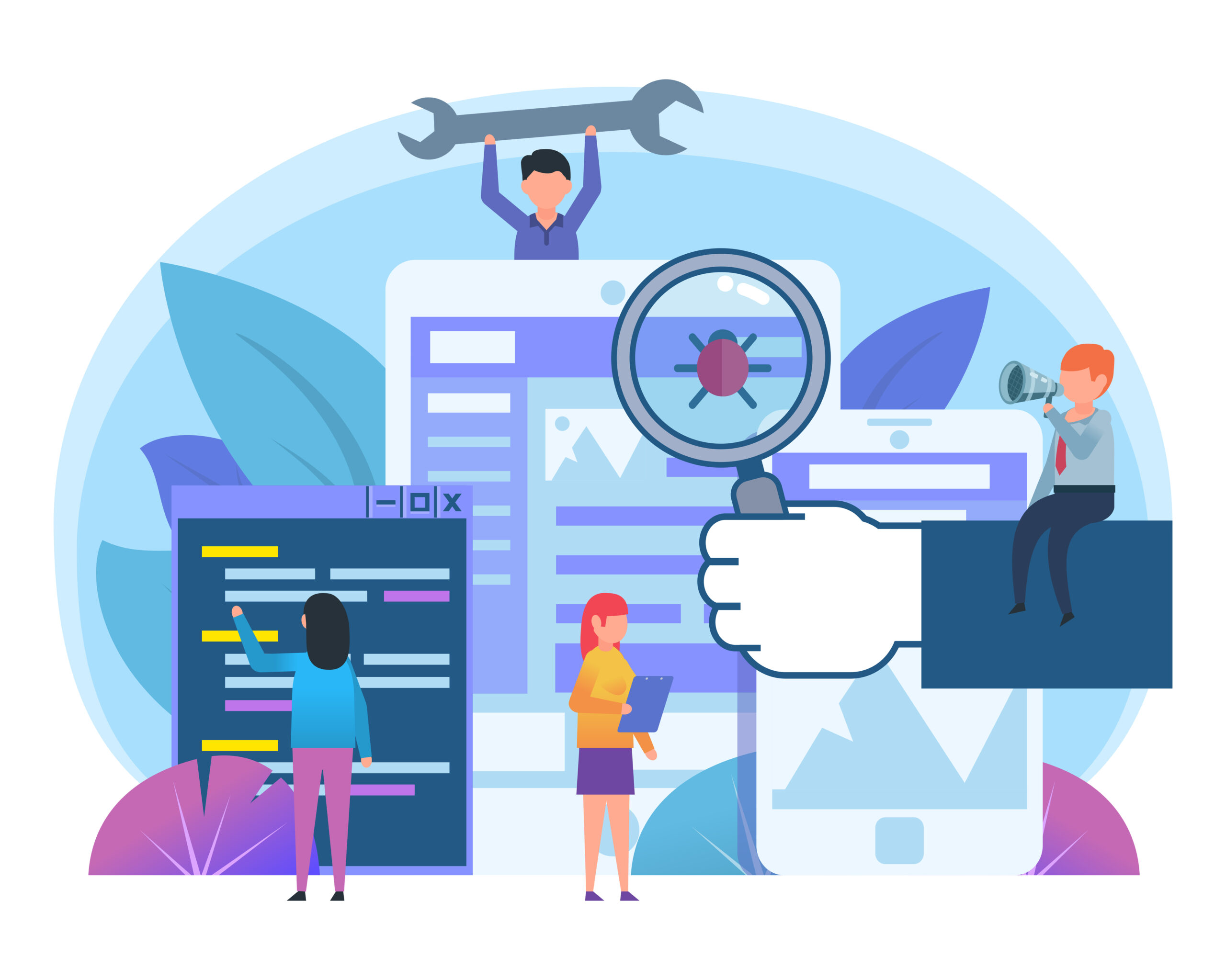In 2023, software testing trends are rapidly evolving. The software testing industry is making sure that the software being released in the market is error-free, secure and meets high-quality standards. Thus, the software testing industry is expecting significant growth with the increasing demand for high-quality software products. Companies are adopting the latest software testing trends and technologies, tools and frameworks to enhance the software testing process.
The software testing industry is witnessing innovations in automation testing, IoT testing, Big data testing, and API test automation. In this blog post, we will explore the latest software testing trends and popular testing technologies for 2023.
Artificial intelligence and machine learning in testing
Artificial intelligence (AI) and machine learning (ML) are rapidly transforming the software testing industry. The main priority of AI and ML testing is to enable organisations to automate testing activities and improve overall testing efficiency and accuracy.
Some common examples of how AI and ML are used in testing are Test Case Generation, Test Prioritization, Test Suite Optimization, Defect Prediction and Intelligent Test Automation.
AI and ML are revolutionizing the latest software testing trends. It is helping organizations to automate the testing process and increase the speed and accuracy of testing. These automation testing are also reducing costs and improving software quality.
Continuous testing and integration
Continuous testing and integration are key aspects of DevOps. It is a set of software testing practices to emphasize collaboration and communication between development and operations teams.
A few examples of continuous testing and integration during the software development process are Code integration, Automated Testing, Early Detection of Issues, Shift-left Testing, Real-time Feedback, and Risk-based Testing.
Continuous testing and integration are critical aspects of modern software development. These software testing trends help the software development teams to deliver high-quality software at speed, with reduced costs and risk.
Automation Testing using open-source tools
Open-source tools always bring innovation in software testing industry. Automation Testing using open-source tools is a popular software testing trend of 2023. It offers several benefits such as lower costs, more flexibility, and a wide range of options to choose from. Some open-source tools used in automation software testing are:
Selenium
Selenium is a popular open-source tool used for automating web browsers. It supports different programming languages and offers web application testing. It can also simulate user interactions and test multiple browsers and operating systems.
Appium
Appium is an open-source testing technology in software testing industry for mobile application testing. It supports Android and iOS platforms and provides a unified API. It helps developers to write tests to run on multiple platforms.
JMeter
JMeter is an open-source software testing tool for load testing and performance testing of web applications. It simulates high loads and provides detailed reports and analytics on the performance of the application.
Some other innovative software testing tools are Robot Framework and TestCafe. These open-source testing tools provide a cost-effective and flexible solution for test automation. They help organizations to build robust and scalable test suites that can be integrated with their existing tools and workflows.
Exploratory testing for improved quality
Exploratory testing is the latest software testing trend that focuses on the discovery, investigation and learning to improve the quality of software products. Here are a few examples of how exploratory testing is used to improve quality:
- Identifying edge cases: This software testing trend is used to identify new scenarios and edge cases to uncover issues missed by traditional testing.
- Simulating real-world scenarios: Testers create test scenarios that mimic real-world situations to find issues that may not be caught by scripted tests.
- Finding usability issues: This is used to find usability issues that could impact user experience but may be missed by traditional testing.
- Improving test coverage: Exploratory testing supplements traditional testing methods to improve test coverage and find issues missed by other methods.
- Fostering creativity and innovation: Exploratory testing encourages creativity and innovation to uncover issues that may not have been considered previously, improving software quality.
Adoption of Agile Testing methodology
Agile development involves breaking down development into small, iterative cycles called sprints. Development teams work closely with stakeholders to continuously deliver working software that meets evolving requirements.
There are several methodologies under the Agile umbrella like Scrum, Kanban, and Lean. Each of these methods has its unique approach to Agile development.
Scrum is about the idea of sprint planning, daily stand-up meetings, and sprint reviews but Kanban focuses on visualizing and optimizing the flow of work.
The Lean methodology emphasizes continuous improvement by focusing on identifying and eliminating waste in the development process.
Regression Testing
Regression testing is a software testing trend that involves retesting previously tested functionalities. This test ensures the software still works correctly even after the internal changes in the code. Suppose a new feature is added to an e-commerce website then the regression testing will check if the existing functionalities still work correctly like adding items to the cart, checking out, and processing payments. Regression testing is essential to maintain the software quality to meet user expectations.
Regular regression testing helps software developers to catch potential issues and fix them before they become more significant problems. This process enhances the software’s performance and user satisfaction.
Cybersecurity Testing
In today’s digital world, cybersecurity threats are common. So, protecting your software from hackers and viruses is a crucial part of software development. Cybersecurity testing helps organizations identify the susceptible areas of software application and ensure that it is protected from security breaches.
With cybersecurity testing, you can assess your software application’s security posture, evaluate its ability to withstand external attacks, and identify vulnerabilities that may expose sensitive information. This can help you find and fix security weaknesses before they are exploited against you by attackers.
Cybersecurity testing involves vulnerability scanning, penetration testing, security code reviews etc.
- Vulnerability scanning identifies weaknesses in your software application and its infrastructure.
- Penetration testing involves simulating a real-world attack on your software application to identify and exploit weaknesses in its security measures.
- Security code reviews involve analyzing your software’s code to identify potential vulnerabilities and weaknesses.
Blockchain Testing
Blockchain testing is a new software testing trend gaining attention in recent years with the rise of blockchain technology. According to Gartner, blockchain technology is expected to create over $3 trillion in business value by 2030, making it a critical area for testing.
In software testing news, blockchain testing is becoming more important because of blockchain’s numerous applications like supply chain management and financial transactions. Software testing technologies for blockchain testing include automation testing, performance testing, and security testing.
With the innovation in software testing, blockchain testing is an example of how software testing is adapting to new and emerging technologies. The software testing industry is constantly evolving and this demands new approaches and tools to keep up with the pace of change.
Blockchain testing is a critical area for testing focusing on the security and reliability of shared ledger systems. As a testing technology in software testing, it requires the use of different testing techniques to ensure the performance, scalability, and load capacity of blockchain databases and ledgers.
IoT Testing
IoT devices are becoming increasingly popular. With its popularity, IoT testing also emerged as a critical software testing trend. IoT testing aims to keep the transmission of data over the internet safe and secure.
Some common types of IoT testing plan are usability, compatibility, data integrity, reliability, and scalability. IoT testing checks the performance, functionality, and security of IoT devices to meet the user’s requirements.
Innovation in software testing is significant in this area. It is leading to new testing technologies and tools to test IoT devices more efficiently. According to software testing news by Gartner, there will be 25 billion IoT devices in use by 2023. This shows the importance of IoT testing in the software testing industry.
IoT testing is a crucial software testing trend and it will continue to grow with more devices connecting to the internet every day. Therefore, it is essential nowadays to keep up with the latest software testing trends and technologies to ensure the quality and security of IoT devices.
Big Data Testing
As many organizations are relying on data, big data testing is becoming a critical software testing trend. By definition, Big data is a large dataset that is difficult to process using traditional methods. The goal of big data testing is to assure the accuracy, consistency, and reliability of data in a given dataset.
This kind of testing covers data quality testing, performance testing, and functional testing of structured and unstructured data. To test big data, companies use different tools and techniques like Hadoop and Spark. These tools are specifically developed for big data.
With the increasing importance of Big Data, many organizations think this will be a crucial software testing trend in the near future.
QAOps
QAOps is a relatively new trend in software testing that aims to combine quality assurance and IT operations. This approach uses a DevOps-based methodology to achieve high-quality software.
In QAOps, the testing team works closely with the operation and developer teams. The testing teams are actively involved in the continuous integration and continuous development process. This allows faster testing and deployment of software updates while maintaining high levels of quality on the other hand.
With QAOps, testing is integrated into the development and deployment process. This method results in a more collaborative approach to software development. This helps keep the testing process continuous and automated. As a result, it becomes easier to identify and fix issues as they arise. This approach helps companies with quick responses to changing market demands and stay competitive.
Mobile Automation Testing
Mobile automation testing is a software testing trend ever since the inception of Android and iOS apps. With the increasing number of Android and iOS devices, software development companies are putting raw effort into developing and testing mobile apps.
According to a report, the mobile app testing market is set to generate a revenue of $8.23 billion by 2025. To fulfil this ever-increasing and high demand for smooth and interactive mobile apps, companies need experienced testers to automate mobile app testing.
Mobile Automation Testing helps in measuring the reliability, performance, and functionality of mobile apps across different devices and platforms. With the continuous growth of the mobile app market, mobile automation testing will remain an important part of the software testing industry.
Summary
The importance of software testing for error-free and user-ready software is in high demand in 2023. To keep up with the latest software testing trends, you must consider the type of software and test environments. If you’re looking to hire software engineers for testing, make sure you’re up to date with the listed 12 popular software testing trends that are emerging in 2023.
If you are looking for software engineers to meet your testing requirements, then contact Optymize.
We have the top 3% of vetted software developers with extensive experience in software testing.
Software Testing Trends: FAQs
Q: What is the future of testing in the IT world?
A: The future of testing in the IT world is bright. Because demand for high-quality software products, emerging technologies, and testing approaches such as DevOps, automation, and AI increasing every day. This opens up a lot of opportunities for software testers in the coming years.
Q: What is the current trend in software testing?
A: Some of the current trends in software testing include test automation, agile and DevOps testing, shift-left testing, and AI-based testing.
Q: Which testing tool is in demand in 2022 and 2023?
A: There are many testing tools in demand, including Selenium, Appium, JMeter, Katalon Studio, and Postman, to name a few. The specific tool in demand may vary depending on the project requirements and industry.
Q: Is software testing a good career in 2023?
A: Yes, software testing is still a good career in 2023 and beyond, with a growing need for high-quality software products and emerging technologies. With the right skills and experience, software testers can enjoy a rewarding career path.
Q: What is the future of software testing?
A: The future of software testing is critical. There will be high demand for continuous testing, performance testing, and security testing. So many companies will adopt emerging and advanced technologies such as AI, machine learning, and automation. In the future, software testing will go hand-in-hand with the software development process.
Q: Which testing is in most demand?
A: AI/ML Testing, Blockchain Testing, Mobile Automation Testing, Cyber Security Testing, Test Automation, and Functional Testing are the most demanding in 2023.
Q: What is the highest salary for a tester?
A: The salary of a tester varies based on location, experience, skillset, and industry. But, senior-level testers with experience and expertise can earn $100,000 or more per year.
Q: Which is better QA or tester?
A: QA and tester are important roles. Their responsibilities are unique. A QA focuses on the quality of the product and processes. But testers focus on executing tests and identifying defects.







